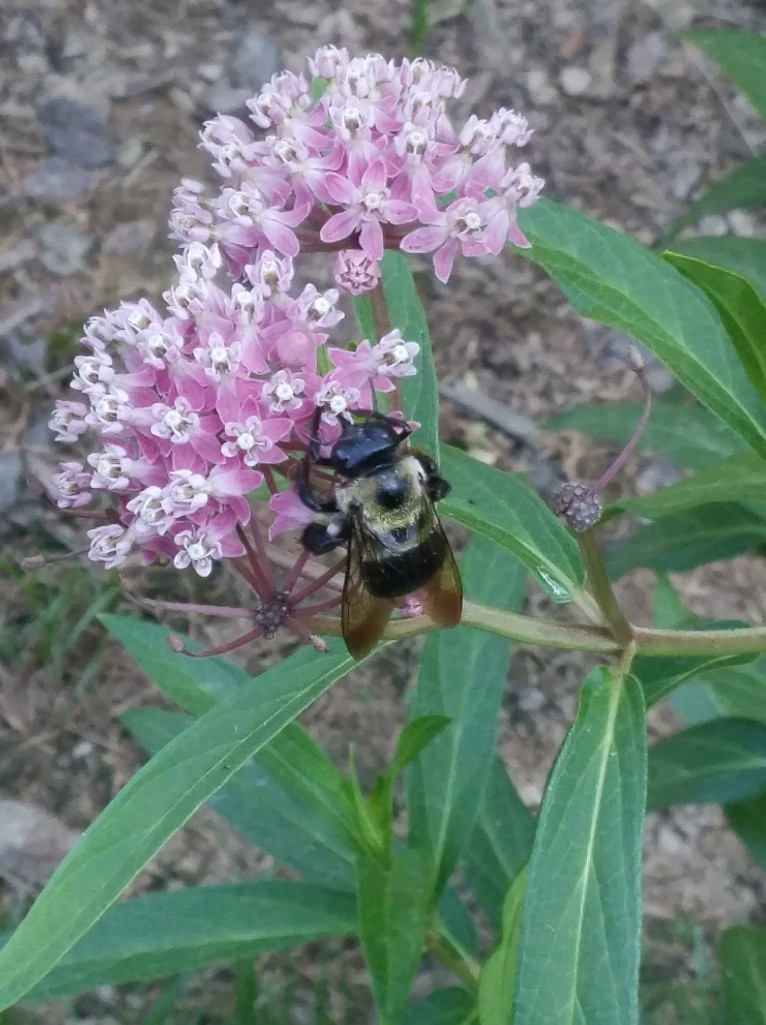While traveling for a few weeks on business, my wife reported regular sightings of a blue heron by the garden’s smaller ponds. The large koi pond is too deep, but in the shallower ponds the heron can stand on the bottom to wait for fish to come out of hiding. I prefer to keep koi only in the deeper, larger pond, but there the numbers continue to increase so that some must be relocated.

After any prolonged absence, there is much work to do upon returning, but I’m encouraged, despite spending this ninety-eight degree afternoon pulling weeds and spraying deer repellent. It seems that in two weeks I’ve become acclimated by too many hours in air conditioning, but I survived the day and there’s only a bit remaining for tomorrow. 
Two weeks ago, there were few bees on developing flowers of Swamp milkweed (Asclepias incarnata, above) and Mountain mint (Pycnanthemum muticum, below), but today both are buzzing with activity. In recent years, the vigorous Mountain mint has spread to cover a few hundred square feet of damp ground ground in a mostly sunny spot between a tall blackgum (Nyssa sylvatica) and katsura (Cercidiphyllum japonicum), and the gardener is cautioned to place this native where is will not overwhelm smaller neighbors. 
Mountain mint is easily controlled if it begins to spread where it’s not wanted, but if the gardener is distracted by other projects this is one more thing that might be neglected. To keep the mint from invading a nearby low spreading spruce (Picea abies ‘Acrocona’) I grab and yank a handful once the stems are a foot or taller. The roots pull out cleanly, and my work is done until late next spring. Once it begins flowering in mid July, the mass of blooms will attract bees, wasps, and hoverflies late into the summer.
I find that the many stinging pollinators are too occupied gorging on the Mountain mint’s nectar to pay much attention to me, and rarely am I stung as I come too close and stay too long.